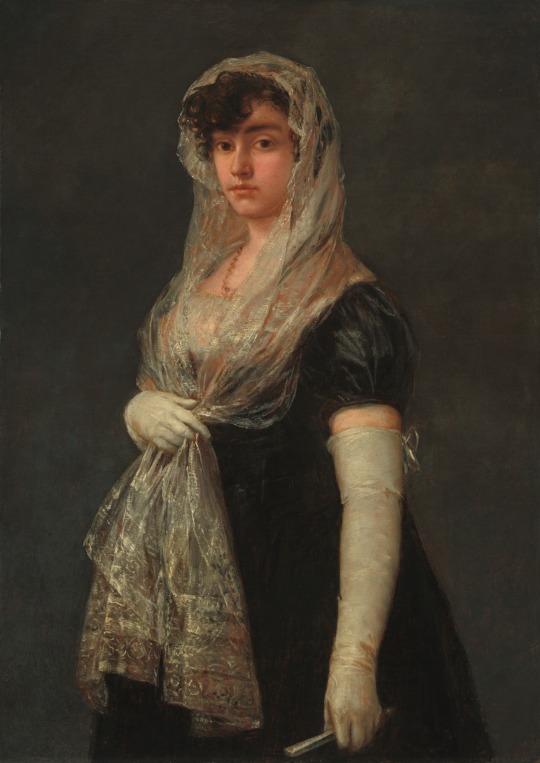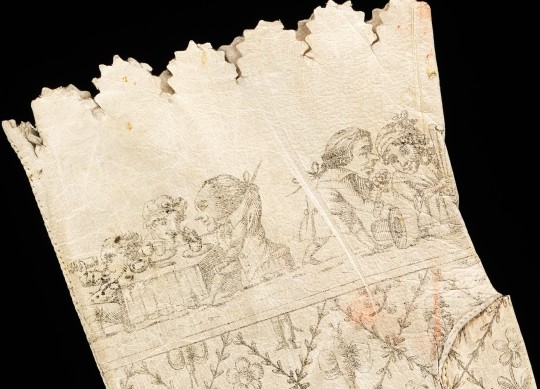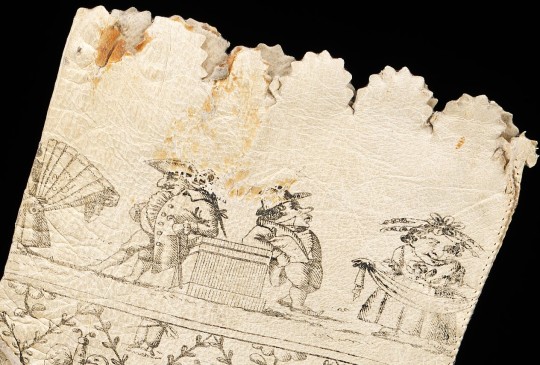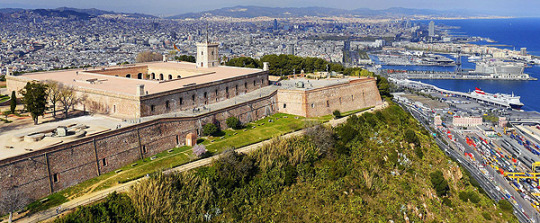#1800s Spain
Explore tagged Tumblr posts
Text

Oil painting, ca. 1800-1805, Spanish.
Painted by Francisco Goya.
Portraying a woman in a black dress and white lace mantilla.
National Gallery of Art.
#1800#1800s#1800s painting#1800s Spain#1800s dress#black#mantilla#gloves#womenswear#19th century#white#lace#francisco goya#nga#national gallery of art#Spain
127 notes
·
View notes
Text

José Maria Veloso Salgado (Spanish, 1864-1945) Amor e Psyche, 1891 Museu Nacional de Arte Contemporânea – Museu do Chiado, Lisboa
#José Maria Veloso Salgado#spanish art#art#fine art#european art#classical art#europe#european#fine arts#oil painting#europa#mediterranean#spanish#spain#galicia#amor e psyche#1800s#greek mythology#mythological art#mythology#mythological#female#male#psyche#amor
3K notes
·
View notes
Text

The proposal, c. 1850
By Adolf Alexander Dillens
#art#painting#fine art#classical art#belgian art#belgian artist#belgian painter#oil painting#19th century art#19th century#spain#spanish culture#figurative art#figurative painting#culture#genre painting#1800s#european culture#european art#southern europe#europe
237 notes
·
View notes
Text

Portrait of a Spanish Lady, Gustave Courbet. 1855.
#aesthetic#art#art history#historical fashion#fashion#historical art#women in art#women#victorian#victorian aesthetic#red#red aesthetic#blue#blue aesthetic#1850s style#1850s#1855#1850s art#1850s hair#historical hair#historical costumes#history#portrait#portrait painting#1800s aesthetic#1850s aesthetic#Spain#Spanish aesthetic#portrait of a woman#Spanish
107 notes
·
View notes
Note
what part of italy are machete and vasco from? not their birthplace since from what i've seen you're still workshopping that. where do they live? i assume rome?
In the 1500's setting Vasco lives and was born in Florence, his family has lived there for centuries. Machete was born in Sicily, was taken to Naples to serve as an apprentice and ended up living and working in Rome (and more specifically today's Vatican city, which as you may know has been an independent country since 1929 but wasn't back then). They first met when they were both studying in Venice in their late teens/early twenties.
I think in the modern au they live together somewhere in Florence.
#characters travelling this extensively at the time#from one end of the country to another#may not be very realistic but it's more fun to include a variety of interesting historical locations#let me be greedy and self indulgent for a moment#(not to mention that Italy wasn't unified until late 1800's and was instead made of various states kingdoms and duchies#that didn't always get along with each other that well and were culturally and linguistically diverse#and some of them were actually ruled Spain and Austria for example)#I say this as lovingly as possible but the history of Italian peninsula as a whole is just a real clusterfuck#I feel like I still haven't wrapped my head around it adequately to be explaining any of this to you#but please be patient with me I promise I'm trying my best#answered#anonymous
185 notes
·
View notes
Photo

New Spain, c. 1800
88 notes
·
View notes
Text




God fights on the side with the best (dressed) artillery.
– Napoleon Bonaparte
A collection of uniforms from Napoleon’s artillery forces across various fronts and years. I think the Peninsular troops stand out the best, dressed well while dealing with the continuous successes and setbacks in Spain.
From Napoleon’s Specialist Troops
#napoleon#napoleonic wars#napoleonic era#artillery#uniform#military#military soldier#soldier#spain#military art#1800s
16 notes
·
View notes
Note
Can we get something with Canada and Uruguay? Heard they're similar in historical aspects


they'd be a funky duo
#context: uruguay often gets confused with argentina due to similar spanish and culture#there's even a gag about who invented the asado and other things lmao#uruguay's territory also was the subject of a custody battle in the 1600s century. passing from spain to portugal and vice-versa#it ultimately ended as a brazilian province in the 1800s and declared independence in the 1820s resulting in the cisplatina war#and then it was britain who granted them independence lmao#hetalia#hetalia world stars#my art#hetalia fanart#hetalia fan art#hws canada#hws uruguay#aph canada#aph uruguay#matthew williams#also yeah its zaza in the last pic
311 notes
·
View notes
Photo



Gloves
1800-1810
Spain
Fashioned from fine Spanish kid, these gloves embody high fashion with a double historical twist. The lattice pattern expresses the geometry of the newly-resurrected design vocbulary of the classical period, while the figures at the top are taken from a series of etchings by Jacques Callot (1592-1635) entitled Varie Figure Gobbi (Various Hunchbacked Figures) ca. 1622., which William Konig (active ca. 1721) interpreted in prints. Callot was an ancestor of the famed Parisian couturieres, The Callot Sisters.
The MET (Accession Number: 2009.300.2259a, b)
#gloves#fashion accessories#1800s#empire era#empire fashion#accessories#19th century#leather#spain#the met
332 notes
·
View notes
Text
The unfortunate interaction between an ADHD girlie and an autism girlie where she's telling me something in depth but I can't make myself focus on it enough and eventually I get really understimulated while trying to listen.
#text post#shark thoughts#sadly this most often happens with history. I'm so sorry to my history fans but if you go into shit that happened in mid 1800s Spain#you're gonna lose me
56 notes
·
View notes
Text
The growth of Barcelona between the years 1823 and 2010.
The red is the built area, black is water (the Mediterranean sea and the Besòs river), and in different shades of gray they represent elevation (white is the flatter surface, and the darker parts are more elevated, in the Collserola and Montjuïc mountains) as well as the old city walls. GIF from Històries de Barcelona.
Barcelona had had basically the same perimeter since the 14th century until the 1850s (what you can see at the beginning of the video). How is it possible that it remained the same for so many centuries -including the beginning of the Industrial Revolution with its urban population boom!- and then suddenly exploded the way it did? As with many things in this city's history, it has to do with the Spanish army.

This is was Barcelona's surface for all those centuries (for those familiar with the city, what nowadays is Ciutat Vella). As you can see, it's inside the city walls (built in the Middle Ages, reinforced with bastions in the Early Modern period).
But in 1703-1714, we have the War of the Spanish Succession, where Castile (Spain) occupies Catalonia and the Bourbon dynasty become kings, and by right of conquest they abolish Catalonia's independence (as well as the Kingdom of València, Mallorca and Aragon, who suffer the same fate, but I will focus on Catalonia in this post because it's what explains Barcelona's weird growth). Catalonia becomes ruled by a military governor chosen by the king from Castile and a huge repression starts against Catalan people, prohibiting the use of the Catalan language in official settings, banning Catalan people from holding office (only Castilians could), forcing families to host invading soldiers in their homes, forcing every town to dedicate a percentage of their fields to feeding the Spanish army and their horses, and a very long etc.
Oh, and they forced the inhabitants of 17% of Barcelona's built surface to destroy their own homes so that Spain could built a huge military citadel to bomb the city from, right where Barcelona's most economically active and most populated neighbourhood (la Ribera) stood.
Barcelona is Catalonia's capital city, and Barcelonians have always been known for their rebellious spirit. The new Bourbon king made sure to turn Barcelona into a completely militarized city, with a strong presence of the army in every corner of the city. There are 2 military buildings right outside the city that answer our question:

On the North, the huge Citadel. On the South, the Montjuïc castle. Then, the Spanish king made the law that nothing could be built outside of the city walls. The reason? They wanted to be able to bomb any place in the city. They could reach the whole city from these two military points, and they didn't want any building outside that they couldn't easily destroy.
The Citadel was demolished in 1868 after a revolution (that's a story for another day), but the Montjuïc castle still exists, standing on top of the hill that overlooks the city:


Anyway, this decision to not allow Barcelona to grow had horrible consequences for its population. In the late 1700s, Barcelona's population was quickly growing because many people from the countryside were moving in to work in its proto-industry. The city could only grow inwards: all the space was filled (say bye to the fields and vegetable gardens that used to be common in the city), the buildings built more storeys taller in cheap material to accommodate more people quickly, houses were divided to rent every floor or room separately, and housing became much more expensive and became treated like a product to make money off. Many families didn't have sunlight nor good air ventilation, with important repercussions in people's health.
The population continued growing, particularly with the Industrial Revolution, when even more people moved into the cities to work in factories. The situation was absolutely unsustainable, so it's no surprise that riots started throughout the 1800s to tear down the walls. However, every time, the Spanish government answered with a strong repression of the people who were destroying the walls and forced them to build them back.
Barcelonians finally made it in summer 1854, when the cholera epidemic worsened at the same time that the 2-year long progressive government started in Spain, which saw tearing down the walls as the only way to settle the constant social uprisings in Barcelona.
In 1859, the Eixample expansion was started to build outside the old city walls, according to the Cerdà plan (the egalitarian urbanism plan, a story for another day). Finally, the city could grow as much as it needed to make room for its inhabitants in dignified houses. And during the late 1800s and throughout the 1900s, Barcelona has been the destination of many waves of immigration, so it has continued growing. Now, it has reached all its growth: there is no space left, with the Mediterranean sea on the East, the Collserola mountains on the West, and already highly-populated cities at the North and South. Barcelona has reached its full possible expansion.
#barcelona#catalunya#història#mapes#urban#europe#history#1800s#1900s#urbanism#maps#war of the spanish succession#guerra de successió#catalonia#1714#european history#spain
42 notes
·
View notes
Text

Santiago Rusiñol I Prats (Spanish/Catalan, 1861-1931) Glorieta al atardecer, ca.1913
#Santiago Rusiñol#spanish art#gazebo at sunset#art#fine art#european art#classical art#europe#european#fine arts#oil painting#europa#mediterranean#glorieta al atardecer#spanish#spain#iberia#iberian#1800s#painting#landscape#garden#beautiful art
1K notes
·
View notes
Text

A solemn beauty
By John Bagnold Burgess
#art#painting#fine art#classical art#british art#british artist#british painter#english art#english artist#english painter#beauty#oil painting#portrait#female portrait#culture#spanish culture#19th century art#1800s#european culture#european art#spain#southern europe#19th century#women
63 notes
·
View notes
Note
give us some Francex Spain headcanons please
This is so long and unorganised, apologies. TL;DR - Francis is lucky Antonio is so placid, because the moments he bites back genuinely frighten him, but the status quo of him sitting neatly on top of Spain always seems to swing back around. Again, Francis is lucky Toni's life ambition is to own a cafe...
For proper context - I imagine Antonio as Castille first, then comes to represent Spain as a whole, though I imagine there will be representations of Galicia, Catalonia/Aragon etc. just like there's the regions of Japan or Picardy for France or indeed how Arthur represents the UK internationally, but of course his brothers are still very much around. So, just for why I think Francis and Antonio have a relationship which goes way back.
Francis and Antonio I imagine as a sin/cos curve... like when Francis is up high, above Toni, things are 'correct' and in their natural place. They're friendly as Antonio is such a mild mannered friendly kid he's quite content to sit and listen to Francis crow about his amazing Kings and fancy court and so on. Francis loves to brag about how it's him that's the true heir to Rome, not the Germans. Spain nods, thinking about other more important things back home.
France used Spain very much as a bulwark against the al-Andalus parts of the Iberian Peninsula - as Francis at the time of Charlemagne and thereafter loved to see himself as the saviour of Europe, so as time goes by and we zip by the occasional Castille/France team up versus England/Portugal you start to get an increasingly influential Spain by the late 15th century, and the trouble is... Toni wants the same thing as Francis. And oddly enough, he's better at getting what he wants, despite seemingly not really trying. Maybe because he is honest to goodness just a little bit less... smug? But sometimes reading Spanish history in the 1500s is going like: Oh. Well that was convenient. It's not the reality of course, but it must have been very frustrating.
Antonio also dislikes the same things as Francis. So it's interesting. When they're fighting my God do they go at it. When they're on the same side their a pretty solid duo. But I love the idea of Antonio just pissing Francis off at times, and like... sometimes just by vibing. The man's vibes are zzzzzzzzzzzzzzzzzzzzz. And Francis - depending on his ego that day - finds it rancid. I know a lot of people don't like the way Antonio is characterised, but I love him as he is so shh. He's so disconnected at times from the reality going on around him. Only his immediate circle matters. He doesn't seem to really understand his Civil War. I think compared to Francis, who is much more in tune with his people... it gets messy.
The trouble comes because Francis is jealous, and likes his standing as number one in Europe. No-one can challenge that. But Antonio does, for a good century or even two, and maybe Antonio doesn't necessarily mean to, but his King and Queens do, or maybe Antonio finds that ambition suits him. The 15th through to mid 17th century gives him the ability to out class Francis. Maybe it's not intentional at first, but once Antonio finally grasps what he may be about to lose during the Thirty Years War and then the failing of his line of the Habsburgs... the ugliness comes out full force.
But... Like to show the overlap once Spain starts to really assert themselves in the late 15th Century, and how truly infuriated Francis must have been at points. They both have a vested interest in Italy - Antonio wins that one. Francis has a stake in Barcelona - Antonio wins that one. They both want the Low Countries. Antonio wins that one. Antonio gets Holy Roman Empire. And the actual creme de la creme... Antonio has divided the world in two with that blooming Treaty of Tordesillas. And the Pope was the one to approve that one. The Pope! The guy who says France is the most important nation for Christianity in Europe (save HRE but... oh look Spain is now Holy Roman Emperor too Jesus Christ).
Needless to say, Francis feels the universe is conspiring against him. God's not still mad about that Avignon Pope... is he?
So Francis is forever looking for ways to kick Antonio in the shins - to go back to him being the main guy in Europe, the guy who wants it and works for it and you know Francis more than anything wants to admired. Antonio... oh. Not sure what he wants more than anything really. A peaceful life. Which he did not get to have for most of his existence really. Arthur and Sadık are handy for Francis to use from time to time to deal a smack to Antonio, but otherwise it's him looking at this guy who - let's be generous - is not the most ambitious man going, who seems to just grow more and more powerful, more and more influential and it eaaaaaaaaats at Francis.
But you know. Habsburgs. Religion. War. Antonio finally understands what he stands to loose, and ah. There's the ambition and drive. But he still looses, and now there's a Bourbon in charge and he is unable to ever fully get back up to that the ascent that the Trastámaras started. Pacte de Famille pops up again and again in the 18th Century, and I like the idea of it being characterised as Francis using Antonio's love of the Italies, and the fact that Arthur is increasingly a pain in the fucking arse for the both of them. Again, both Francis and Antonio love the same things. They also hate the same things. Sometimes that thing is a god awful English dude and sometimes love and hate are indistinguishable.
Like, Francis can loathe Arthur at points, but at least Arthur works to be a pain in the arse. Toni... wants to own a cafe. And he isn't even that good at it.
#this is so unorganised and i didn't talk about anything post 1800 but you get the point#early modern french-spanish relations is a yo yo and i love it#hetalia#hws spain#hws france#headcanon#op#q&a#historical hetalia
41 notes
·
View notes
Text

Francisco de Goya, The Monk’s Visit, c. 1800 - 1810
10 notes
·
View notes
Text

More vampire stories from the Napoleonic era
From Manuscrit trouvé à Saragosse (The Manuscript Found in Saragossa), by Jan Potocki, published between 1805-1815
#Jan Potocki#Potocki#Manuscrit trouvé à Saragosse#vampires#horror stories#horror#french literature#vampire stories#vampire#napoleonic era#napoleonic#first french empire#french empire#French lit#France#Poland#polish literature#The Manuscript Found in Saragossa#The Saragossa Manuscript#Spain#19th century#19th century literature#1800s literature#paranormal
18 notes
·
View notes